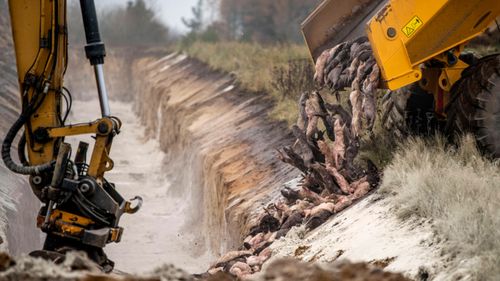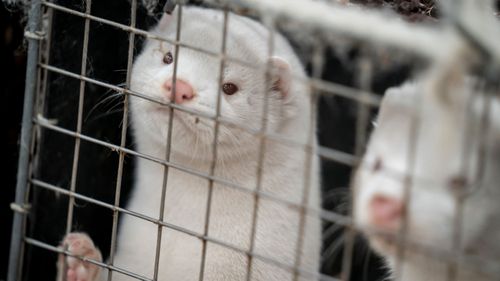Denmark has started digging up millions of culled mink that were buried six months ago, amid fears the carcasses could contaminate nearby drinking water.
But limited capacity in the incinerators meant authorities had to bury around four million of the carcasses on military grounds in the west.

The burial site became a concern when gases from the mink bodies started to release into the sandy soil, causing them to resurface in what some described as something out of a zombie film.
“As the bodies decay, gases can be formed,” police spokesperson Thomas Kristensen told national broadcaster DR at the time.
“This causes the whole thing to expand a little.
“In this way, in the worst cases, the mink get pushed out of the ground.”
The mink were buried in mass graves under a metre of soil, but the dirt in the region is too light to contain the rotting bodies.
Authorities have now started digging the buried mink up, with plans to move the tonnes of bodies into 13 incinerators by mid-July.
Denmark’s former agriculture minister stepped down from his role after admitting there was no legal basis to order healthy mink to be killed, Reuters reported.

New agriculture minister Rasmus Prehn told local media this month’s excavation was embarrassing as he witnessed the start of the process last week.
Mink are small mammals similar to weasels and ferrets, which are farmed for their especially soft and luxuriant fur.

Kopenhagen Fur, a cooperative of 1500 Danish breeders, accounts for 40 per cent of the global mink production.
Most of its exports go to China and Hong Kong.
The coronavirus pandemic could “threaten the entire profession”, Tage Pedersen, chairman of the Danish Fur Breeders Association, said.
“All breeders are right now in a huge amount of uncertainty and frustration over this ‘meteor’ that has fallen on our heads.”
This content first appear on 9news
